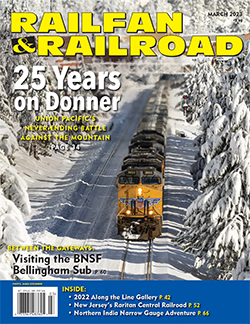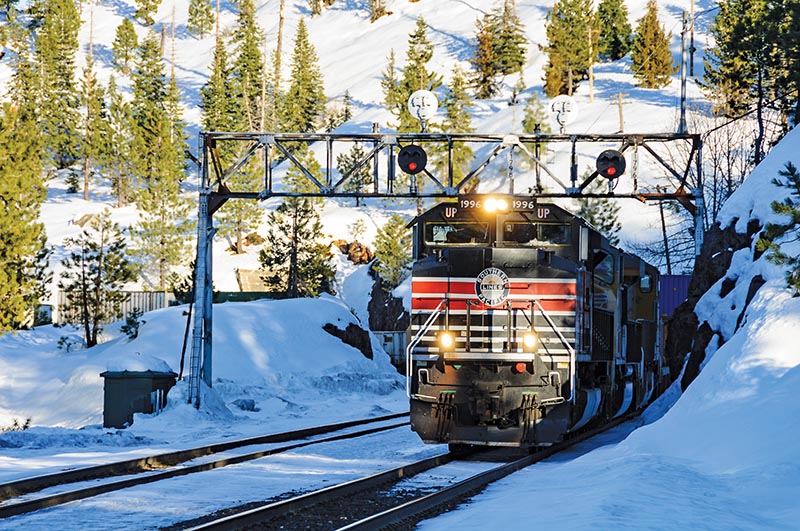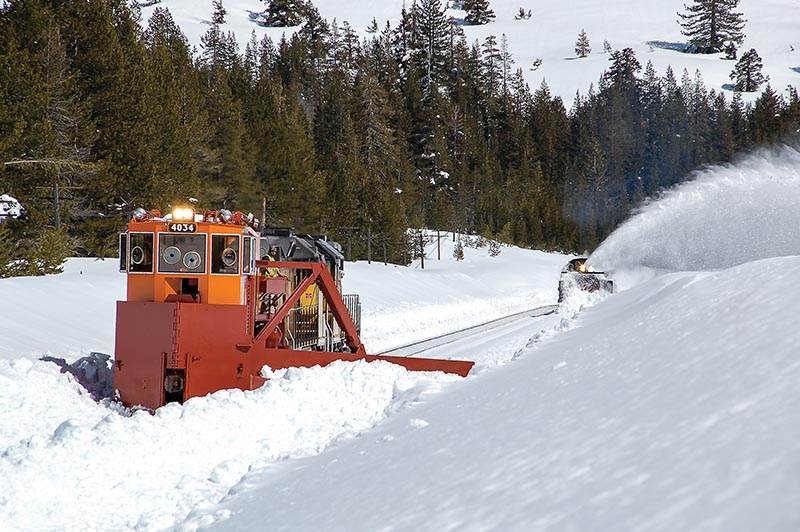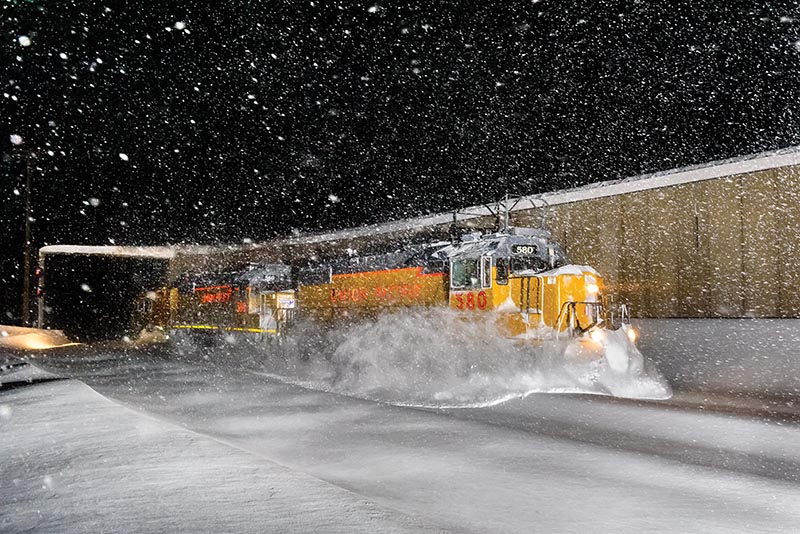 By Dick Dorn and James Schlinger/photos as noted
By Dick Dorn and James Schlinger/photos as noted
Traditionally, when most railfans think about California’s Donner Pass, they conjure images of Chinese workers with shovels, picks, and wheelbarrows; Southern Pacific’s unique Cab-Forward steam engines; miles of wooden snowsheds; steam rotaries chewing through deep snow; sets of “Black Widow” covered wagons; and braces of scarlet and gray SD-45s. Yet, hard as it is to believe, Union Pacific has now owned and operated the line for more than a quarter century. With each passing year, the constant drumbeat of change further relegates the SP era to the history books. Under Union Pacific ownership, there have been some prominent changes to “the Hill” over the past 25 years.
Changes to the Physical Plant
The largest change commenced almost immediately, with the complete rebuilding of Roseville Yard in California. Starting in 1997, UP closed the entire yard and began building an entirely new one, including a new hump, fueling facility, and One Spot car repair facility. The new yard opened for regular use in 1999. The SP diesel repair shop remained, albeit modernized to UP standards. Never before had UP completely closed and rebuilt an entire yard. Today, Roseville is the largest railroad yard in the western U.S.

ABOVE: With Southern Pacific heritage plainly evident, Train IG3OA (Global 3 Rochelle, Ill.–Oakland) catches the last bit of sunlight at Cisco on February 1, 2013. —James Schlinger
At the opposite end of the Pass in Nevada, the Reno Trench represents another major change. Prior to completion, 11 different downtown streets crossed the railroad at grade. With a permanent 20 mph speed limit, a long freight train would block crossings for several minutes, snarling traffic, including emergency vehicles. Even worse, a long Reno Fun Train stopped at the station could block crossings for almost half an hour. To alleviate congestion and eliminate grade crossings, the tracks were permanently placed in a trench through downtown, including a new, below-grade Amtrak platform. The project commenced in 2004 and the first train ran through the trench on November 18, 2005.
Other changes to the physical plant include installation of new concrete ties below Colfax, Calif., and above Shed 10, a new underpass for auto traffic at the west end of Truckee, Calif., and a far more significant undertaking with the notching of many tunnels in 2009 enabling UP to run domestic double-stack containers over the Hill. Southern Pacific had operated limited international doublestack traffic in the early 1990s, but never domestic doublestacks. Prior to the notching project, all UP doublestack traffic traversed the Feather River Canyon. Despite the project’s completion in November 2009, there are still 11 tunnels on Track 2 between Bowman and Colfax that have yet to be notched. This requires a real heads-up on the part of train crews and dispatchers to ensure all doublestacks are routed on Track 1 in this area.

ABOVE: A spreader and rotary work in tandem at Soda Springs on March 29, 2011, with the spreader pushing snow out of “the core” — the area between the main lines — for the following rotary to throw even farther from the right-of-way. —James Schlinger
Changes to Operations
There have also been many changes to operations under UP ownership. For one, BNSF Railway obtained trackage rights east to Salt Lake City. Union Pacific crews run these trains because there are not enough trains for BNSF to establish its own crew base. Typically, BNSF averages three trains a week each way, although its precise operating patterns are somewhat unpredictable.
Traditionally, SP utilized directional running, with westbounds using Track 1 and eastbounds routed via Track 2. Today, UP utilizes bidirectional signals on both main tracks which has all but eliminated directional running. Generally speaking, this allows for much more flexibility in train operations. However, issues sometimes develop when dispatchers in Omaha run a heavy eastbound up the steeper Track 1 from Roseville to Bowman. The irony is it was under UP control in 1909 that E.H. Harriman explicitly ordered work on a more gradual route (today’s Track 2) for all eastbound traffic between Roseville and Colfax…



